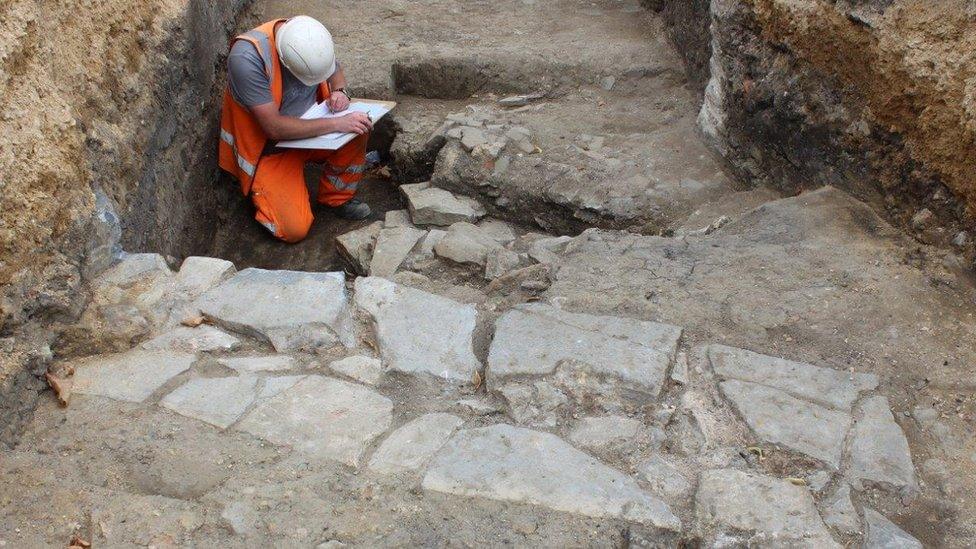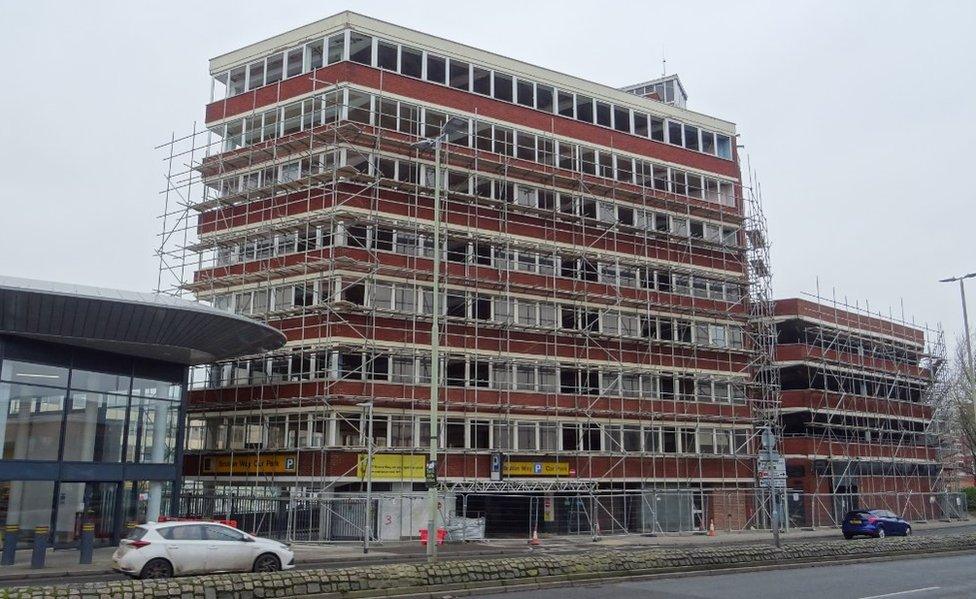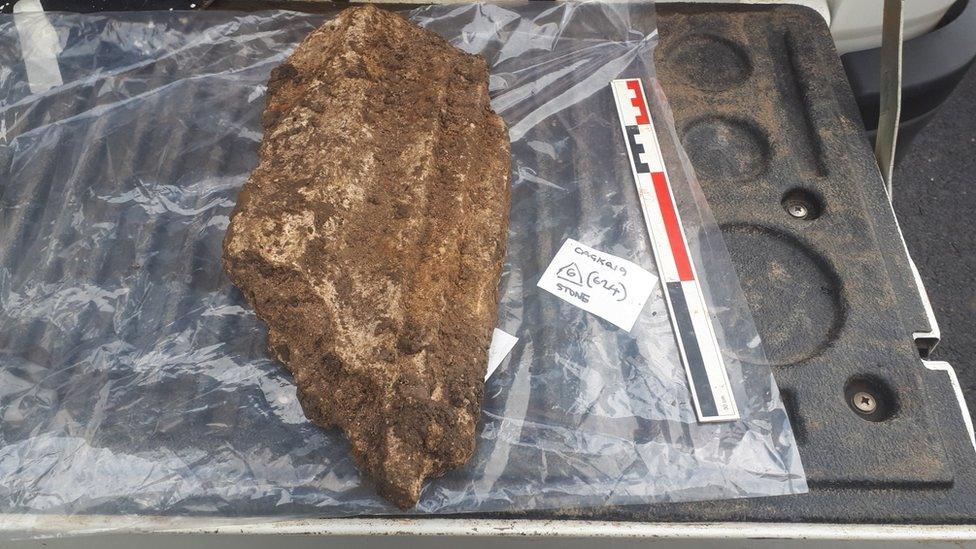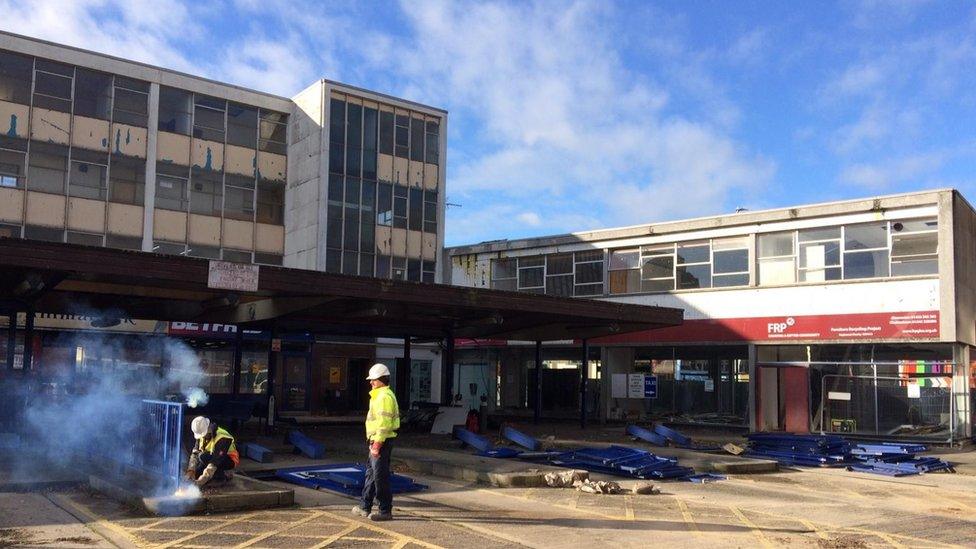'Long-lost' medieval monastery in Gloucester rediscovered
- Published

The monastery was founded in about 1270 but was mostly demolished in the 16th Century
A "long-lost" medieval monastery has been discovered by archaeologists in Gloucester city centre.
The remains of the 13th Century Carmelite friary have been found beneath a demolished multi-storey car park.
Historians knew roughly where Whitefriars had stood, but its exact location was a mystery.
The dig, ahead of redevelopment work as part of the regeneration of the city's King's Quarter, took place in July.
City archaeologist Andrew Armstrong said it was "very exciting" finally to reveal the exact location of "this long-lost friary".
"For around 300 years, Whitefriars played an active part in Gloucester and produced some notable friars, including Nicholas Cantelow (or Cantilupe) in the 15th Century.
"Seeing and documenting this site will serve to underline, and recognise, the place of the friary in the city's history."
Archaeologists from Gloucester City Council and Cotswold Archaeology carried out the dig on the site of a recently demolished multi-storey car park on Bruton Way.

The multi-storey car park on Bruton Way was demolished earlier this year
Their findings suggest there were at least four large buildings at the site, either made of stone or with stone footings, with some of the walls measuring a metre (3ft) wide.
They also found the remains of tiled and mortared floors, and part of a medieval drain.
Some of the larger walls are aligned east-west - a typical feature for a medieval ecclesiastical building.
There were several other monastic organisations in Gloucester, including Blackfriars, Greyfriars, Llanthony Priory and St Oswald's Priory. Whitefriars was the one historians previously knew the least about.

The findings suggest there were at least four large buildings at the site
It was founded in about 1270 but was mostly demolished in the 16th Century, and only traces of it had survived on historical maps.
Details about the findings will be included on information boards that are to be installed at the development site.
- Published13 March 2019

- Published29 January 2019
